You are using an out of date browser. It may not display this or other websites correctly.
You should upgrade or use an alternative browser.
You should upgrade or use an alternative browser.
USAF/US NAVY 6G Fighter Programs - F/A-XX, F-X, NGAD, PCA, ASFS news
- Thread starter Matej
- Start date
The F-35C is among the most *capable* naval fighters out there, and it isn't even a pure fighter ( more like a long-range striker with fighter capability).There is no point in having such a force of modern CVNs if the aircraft on them aren't kept to date to match the latest threats
The carriers can stay far away, as aircrafts can fly and provide coverage. It also helps that the replenishment ships get to do their work in areas that aren't compromised by PLARF naval strike force. AAW could also be provided by the destroyers, armed with far larger radar arrays and missiles than fighters could, while the fighters, cruising in a much more elevated position, closer to the enemy, could provide the sensing capability to search, track and guide. Cooperative engagement, systems as a whole.protecting the surface fleet itself
Colonial-Marine
UAVs are now friend, drones are the real enemy.
- Joined
- 5 October 2009
- Messages
- 1,254
- Reaction score
- 842
I'll grant you that the F-35C is a very capable aircraft in many respects, but it is a strike fighter, and I'd emphasis the strike part of that term. It gives up some performance to have greater range.The F-35C is among the most *capable* naval fighters out there, and it isn't even a pure fighter ( more like a long-range striker with fighter capability).
I'm envisioning something with a similar degree of stealth as the F-35 or F-22 that can go Mach 2+ if needed and can supercruise with a payload of long-range air-to-air missiles. A modern successor to the F-14 in many respects. Naturally it can be given some air-to-surface capability, but this should be secondary to its role of countering offensive efforts of the enemy's land or carrier-based aircraft.
Indeed, the ability of the carriers to stand-off from most threats is hugely important and is one of the reasons a longer range was desired from F/A-XX. But I don't see how this decision helps that goal.The carriers can stay far away, as aircrafts can fly and provide coverage. It also helps that the replenishment ships get to do their work in areas that aren't compromised by PLARF naval strike force. AAW could also be provided by the destroyers, armed with far larger radar arrays and missiles than fighters could, while the fighters, cruising in a much more elevated position, closer to the enemy, could provide the sensing capability to search, track and guide. Cooperative engagement, systems as a whole.
I am once again given the impression that NAVAIR doesn't know what it wants and doesn't know what it's doing. There is no point in having such a force of modern CVNs if the aircraft on them aren't kept to date to match the latest threats. There seems to be a focus on strikes against PRC mainland targets if it came to war but what about the role of protecting the surface fleet itself? The threat isn't just those anti-ship ballistic missiles that seem to get all of the focus.
I think realistically most of the air wing *will* be dedicated to screening the surface fleet (in a peer war), which is why long range counter air is a lower priority. The range of the current air wing is perfectly adequate if you are operating within several hundred miles of the bird farm. In the medium to long term future I think the USN would like to extend its counter air and strike range, with UAVs playing a much larger role in the force structure.* But they have other priorities now.
Also I think one can argue that the ballistic missiles are by far the most serious threat, given their long range, short travel time, and short prep time. Consider the thousand mile range band: an SSK is going to have to slog for a week or more to get to the patrol area. Tactical air will need refueling to cover any air operation, and any large force transiting the first island chain probably is detected by someone on the way out. An AShBM can just skip over that distance in twenty minutes.
*(EDIT TO ADD): To the USN seems to be focusing on very long ranged subsonic weapons in the near to medium term with opponent ships being their primary target (as opposed to say the mainland). So we see Tomahawk blk V, LRASM C2 ("naval JASSM"), MALD-N, and now the proposal for "MACE". So even the offensive strike (against ships) needs no escort. That limits the target set but it is a much more achievable goal, for now.
Last edited:
dark sidius
ACCESS: Top Secret
- Joined
- 1 August 2008
- Messages
- 778
- Reaction score
- 479
The F/A-XX funding is specifically for research and development of the fighter and does not include funding spent on the Next Generation Air Dominance family of systems, some of which are classified, Reynolds said.https://news.usni.org/2024/03/11/new-navy-budget-seeks-6-battle-force-ships-10-decommissions-in-fy-2025
In fact this is possible that much of the FA/XX budget is in the classified
In fact this is possible that much of the FA/XX budget is in the classified
dark sidius
ACCESS: Top Secret
- Joined
- 1 August 2008
- Messages
- 778
- Reaction score
- 479
Scott Kenny
ACCESS: Above Top Secret
- Joined
- 15 May 2023
- Messages
- 7,355
- Reaction score
- 6,930
For roughly half of the embarked aircraft?So what are USN carriers for if holding targets-at-risk is better done by long-range aircraft, missiles, or submarines? Is the defacto purpose of carrier aircraft to defend the floating bases?
Yes, that's EXACTLY the purpose.
16x aircraft to make 2x 2-bird CAPs flying 24/7 (one more or less on top of the carrier, one ~150nmi towards the likely threat). 5x Hawkeyes, again to keep 1x up 24/7. 12x MH60R ASW helos (though some of those are spread across the escorts, that's still enough to keep 2-3 up 24/7). 3x tankers. 36 birds required for group protection.
All the rest make up the strike package.
That's very much what I'm seeing as the FAXX. A 'mere' 85klbs MTOW (catapult max), ~55klbs landing weight, ~30klbs of fuel.I'm envisioning something with a similar degree of stealth as the F-35 or F-22 that can go Mach 2+ if needed and can supercruise with a payload of long-range air-to-air missiles. A modern successor to the F-14 in many respects. Naturally it can be given some air-to-surface capability, but this should be secondary to its role of countering offensive efforts of the enemy's land or carrier-based aircraft.
The USAF NGAD is looking more like 105klbs MTOW, and most of that increase over the FAXX is more fuel for more range. Because either you're flying from Japan and Okinawa or you're flying from Alaska-Hawaii-Guam. Nothing really in between with a 3km runway on it!
Australia might be an in between the second chain and outlying US states. But certainly range is a major consideration, more so than FA-XX. If the USN was Guam level distant from the PRC coast, I suspect they would be happy. Thier airfield moves.
- Joined
- 6 August 2007
- Messages
- 3,147
- Reaction score
- 2,722
I am once again given the impression that NAVAIR doesn't know what it wants and doesn't know what it's doing.
The Navy needs a naval NGAD. What it will ask for, and get, is a “ hyper Hornet” with a few UAVs it doesn’t know what to do with that will eat more specious below deck space.
If the Navy had a clue it would be pushing separate, cheaper “carriers” for unmanned systems.
The Navy needs a naval NGAD. What it will ask for, and get, is a “ hyper Hornet” with a few UAVs it doesn’t know what to do with that will eat more specious below deck space.
If the Navy had a clue it would be pushing separate, cheaper “carriers” for unmanned systems.
The USN has lots of requirements. Super long range anti aircraft might just not be the top of the stack
Scott Kenny
ACCESS: Above Top Secret
- Joined
- 15 May 2023
- Messages
- 7,355
- Reaction score
- 6,930
Tomcat was originally spec'd to have ground attack capabilities, wasn't it? They just weren't funded till late.The Navy needs a naval NGAD. What it will ask for, and get, is a “ hyper Hornet” with a few UAVs it doesn’t know what to do with that will eat more specious below deck space.
Maybe for small unmanned systems, but anything roughly the size of a modern plane requires a supercarrier.If the Navy had a clue it would be pushing separate, cheaper “carriers” for unmanned systems.
FighterJock
ACCESS: Top Secret
- Joined
- 29 October 2007
- Messages
- 4,586
- Reaction score
- 3,993
I had originally thought that both the F/A-XX and NGAD were supposed to be one and the same quellish? Now it seems that they are going with different ideas as to what each service needs in terms of specifications.
I had originally thought that both the F/A-XX and NGAD were supposed to be one and the same quellish? Now it seems that they are going with different ideas as to what each service needs in terms of specifications.
They were never the same. The hope was that they could share technology. But the FA-XX will have weight, size, and stall speed requirements that NGAD will not. Plus the USN probably does not need the same level of range, since it’s airfields move.
FighterJock
ACCESS: Top Secret
- Joined
- 29 October 2007
- Messages
- 4,586
- Reaction score
- 3,993
Forgetting also the fact the F/A-XX will also have to be structurally stronger than the Air Force NGAD due to the fact of carrier landings.
- Joined
- 3 June 2011
- Messages
- 17,677
- Reaction score
- 10,017
They could base it off the LHA hull. Problem is, they go down that road, the politicians will be saying, "we don't need these big fancy CVNs anymore because these new drone carriers are "transformational, asymmetric game-changers".The Navy needs a naval NGAD. What it will ask for, and get, is a “ hyper Hornet” with a few UAVs it doesn’t know what to do with that will eat more specious below deck space.
If the Navy had a clue it would be pushing separate, cheaper “carriers” for unmanned systems.
Scott Kenny
ACCESS: Above Top Secret
- Joined
- 15 May 2023
- Messages
- 7,355
- Reaction score
- 6,930
No, they were always going to be different airframes, probably just sharing engines and electronics.I had originally thought that both the F/A-XX and NGAD were supposed to be one and the same quellish? Now it seems that they are going with different ideas as to what each service needs in terms of specifications.
USN has MTOW limits (and landing weight limits) that don't apply to the USAF, and doesn't need as much range as the USAF, either.
NeilChapman
Interested 3rd party
- Joined
- 14 December 2015
- Messages
- 1,294
- Reaction score
- 502
The T-7A program is doing reasonably well. Feels like most of Boeing's problems are with the commercial (and commercial derived) side.
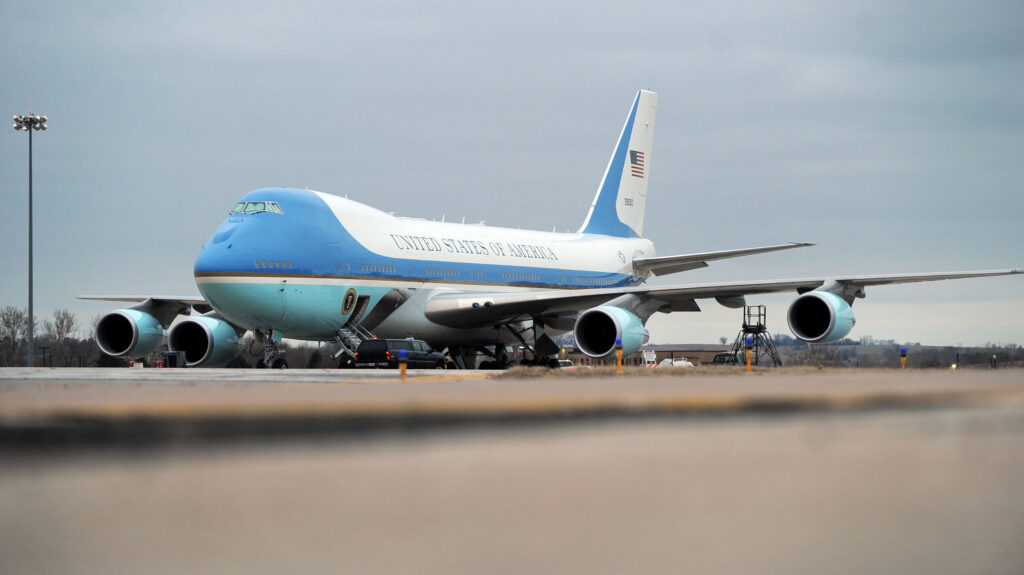
Boeing adds $1B in new charges for Air Force One replacement, T-7 Red Hawk programs - Breaking Defense
"Air Force One, I'm just going to call a very unique moment, a very unique negotiation, a very unique set of risks that Boeing probably shouldn't have taken," Boeing CEO Dave Calhoun said. "But we are where we are, and we're going to deliver great airplanes. And we're going to recognize the...
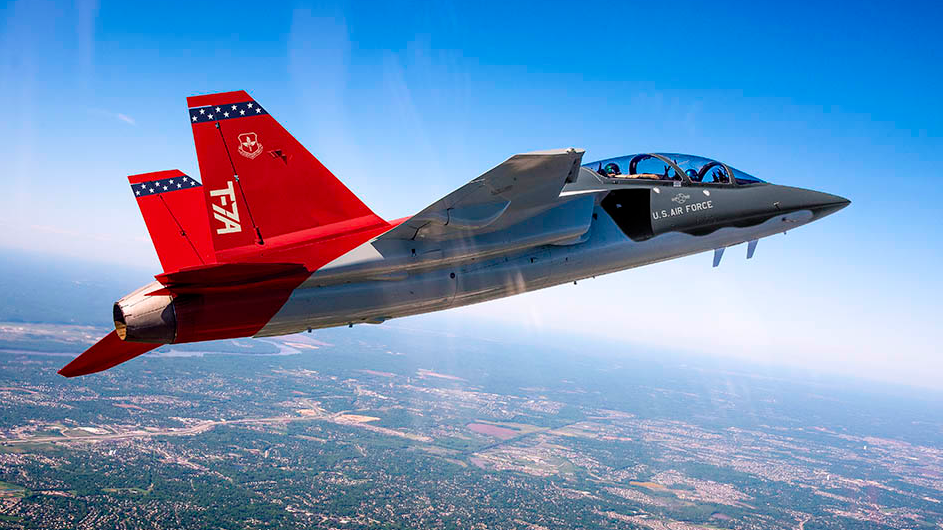
Boeing backs T-7 amid stinging GAO report that cites 'tenuous' strain with Air Force - Breaking Defense
A Boeing official tells Breaking Defense that the company is making strides on issues around the training jet's ejection seat.
Meh...
Yes, they finally delivered a plane. But the software...
NeilChapman
Interested 3rd party
- Joined
- 14 December 2015
- Messages
- 1,294
- Reaction score
- 502
I think that is the way the USAF is going Josh_TN, having just the manned variant of the NGAD as the air controller with twin seats controlling the far more numerous CCA UCAVs into battle and keeping far away from the fight.
I can't imagine NGAD not being the tip-of-spear, neutralizing enemy air-to-air capacity in critical areas, granted with stealth cca's to extend their 'capabilities.' Unless the thinking has changed I'd expect NGAD to be making space for B-21's.
NeilChapman
Interested 3rd party
- Joined
- 14 December 2015
- Messages
- 1,294
- Reaction score
- 502
... I think it possible we might even see CCAs with the same mission and price point being build by different contractors.
Well, they want 1000 of them. It would probably be prudent to have a number of manufacturers.
I hope they can follow-up with the missile production. They've got to cut the cost of munitions.
NeilChapman
Interested 3rd party
- Joined
- 14 December 2015
- Messages
- 1,294
- Reaction score
- 502
Australia might be an in between the second chain and outlying US states. But certainly range is a major consideration, more so than FA-XX. If the USN was Guam level distant from the PRC coast, I suspect they would be happy. Thier airfield moves.
Don't forget the new bases in the Philippines...
I don't see the USN staying out of a fight. There are a number of southern Japanese islands East of Taiwan and the Philippines where Marines may haunt the PLN.
dark sidius
ACCESS: Top Secret
- Joined
- 1 August 2008
- Messages
- 778
- Reaction score
- 479
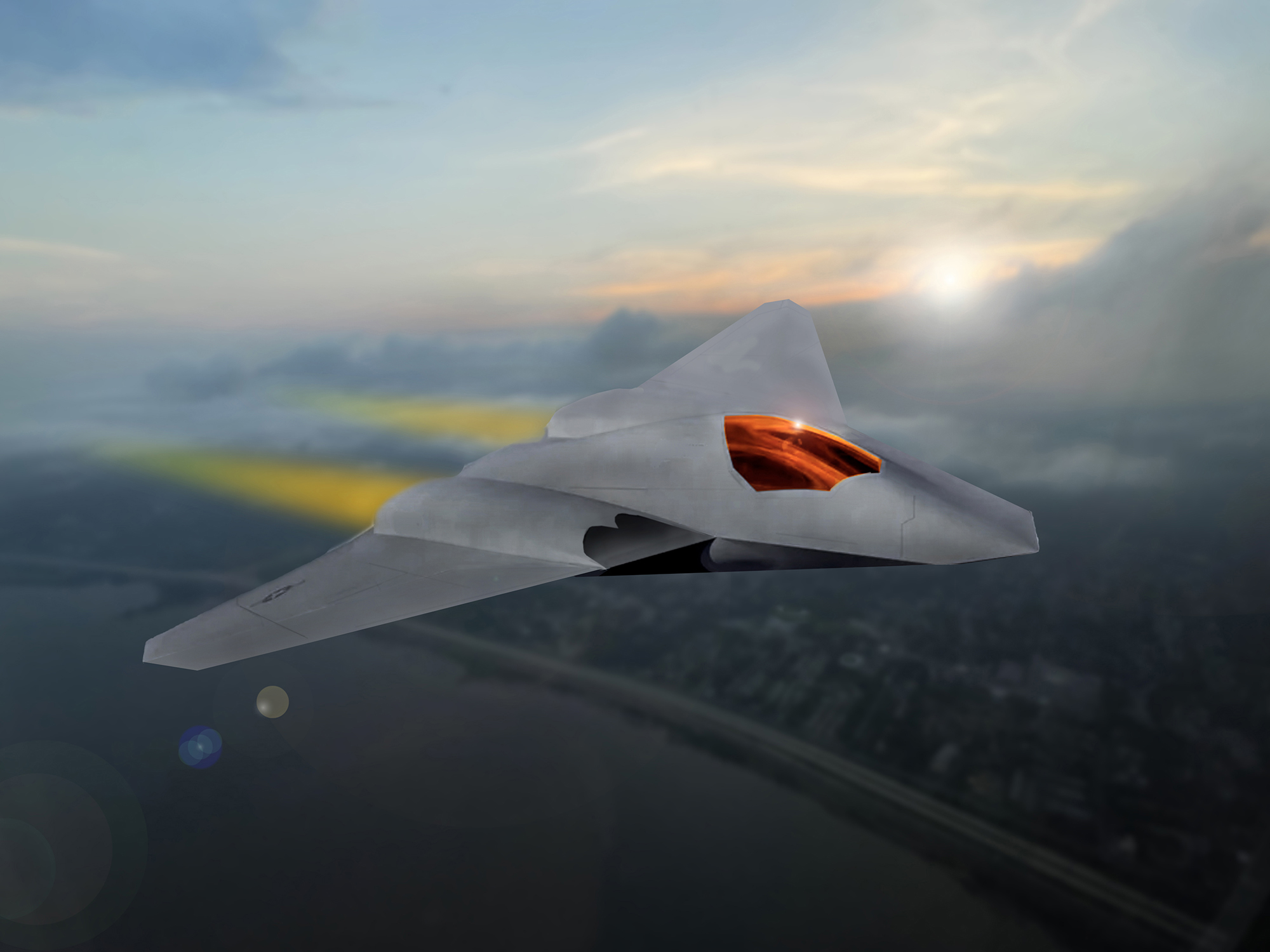
USAF Plans $28.48 Billion over 5 Years to Develop New Advanced Fighters, Drone Escorts
The Air Force plans to spend $28.46 billion on NGAD and CCA, its new advanced stealth fighters and unmanned escorts, in the next five years.
Scott Kenny
ACCESS: Above Top Secret
- Joined
- 15 May 2023
- Messages
- 7,355
- Reaction score
- 6,930
Making orders of 10,000/yr instead of 1k/yr will help that.Well, they want 1000 of them. It would probably be prudent to have a number of manufacturers.
I hope they can follow-up with the missile production. They've got to cut the cost of munitions.
Forest Green
ACCESS: Above Top Secret
- Joined
- 11 June 2019
- Messages
- 6,601
- Reaction score
- 9,976
If I´m not mistaking, the AF wants to award an EMD-contract next year for a very, very expensive air-dominance 'platform' that comes with a lot of whistles & bells, and as I have read/understood during the past months, one that will already incorporate as much as possible all of the desired technologies & subsystems at the time the EMD-contract decision has to be made, to avoid (another) prolonged and more complicated development later on. I would assume the AF is taking a similar path with the NGAD-platform as with the B-21; to be able to move from developmental aircraft to production-aircraft as swiftly as possible.
I'm inclined to believe something is going on that is different than in the past. Vago Mauradian and JJ Gertler has mentioned 2028 as when NGAD will either be operational or flying. Air and Space Magazine has used 2030, not the 2030s. The only information we have to go off of is what officials or journalists with sources have unveiled.
Roper's comments were followed by others:
Lieutenant General Clinton Hinote, the AF’s Deputy Chief of Staff for Strategy, Integration and Requirements, has mentioned that he has taken legislators to view the “aircraft" and they have been impressed. Lieutenant General Richard Moore, Deputy Chief of Staff for Plans and Programs more recently has noted that “NGAD is not a powerpoint aircraft. It is real and has flown.” At the very least, I don't think it would be unreasonable to assume that the demonstrators are full scale demonstrators that at least resemble the production aircraft to some degree.
The AF has spent a lot of money in the Technology Maturation and Risk Reduction phase. What has that got them? At least three "demonstrators?" Similar to the YF-22/YF-23 and the X-35/X-32? Or something more mature in development?
With the engine program, the AF has expressed a desire to carry the Pratt and GE to prototyping before an award. The AF could be following the same path with the airframe, and possibly the mission systems for that matter. John Sneden from GE expects testing in 2024-25 and a down select in 2026. Funding for NGAP begins to decline after FY24 and ends after FY27, pointing to production?
If there is a high degree of maturation in the designs I could see that a contractor could roll out the first test article by 2028. The engine should be ready by then. But it would be much more difficult for NGAD to become operational by 2028. How long would testing take before production aircraft were rolled out? 2 years? More?
If the AF can pull this off then they are clearly far a head of the other services in vision and execution.
- Joined
- 6 August 2007
- Messages
- 3,147
- Reaction score
- 2,722
The only information we have to go off of is what officials or journalists with sources have unveiled.
Why is that?
Bruno Anthony
I miss the Cold War
- Joined
- 5 August 2012
- Messages
- 614
- Reaction score
- 567
NATF returns!I'll grant you that the F-35C is a very capable aircraft in many respects, but it is a strike fighter, and I'd emphasis the strike part of that term. It gives up some performance to have greater range.
I'm envisioning something with a similar degree of stealth as the F-35 or F-22 that can go Mach 2+ if needed and can supercruise with a payload of long-range air-to-air missiles. A modern successor to the F-14 in many respects. Naturally it can be given some air-to-surface capability, but this should be secondary to its role of countering offensive efforts of the enemy's land or carrier-based aircraft.
Indeed, the ability of the carriers to stand-off from most threats is hugely important and is one of the reasons a longer range was desired from F/A-XX. But I don't see how this decision helps that goal.
Several billion dollars clearly is not enough for production, probably even low rate, for a platform that already has a price tag of “hundreds of millions”. CCA on the other hand seems to have a much more truncated development using largely off the shelf technology (the physical aircraft, not the AI agents and interface). The unmanned portion tge USAF is already predicting for 2028. But for the manned aircraft, I do not see how there is any significant production activity this decade.
Scott Kenny
ACCESS: Above Top Secret
- Joined
- 15 May 2023
- Messages
- 7,355
- Reaction score
- 6,930
Agreed, I'd be surprised if the NGAD contract is signed before 2030.Several billion dollars clearly is not enough for production, probably even low rate, for a platform that already has a price tag of “hundreds of millions”. CCA on the other hand seems to have a much more truncated development using largely off the shelf technology (the physical aircraft, not the AI agents and interface). The unmanned portion tge USAF is already predicting for 2028. But for the manned aircraft, I do not see how there is any significant production activity this decade.
The CCAs can be flying sooner, we have F15D, -E, and -EX available to play quarterback.
Scott Kenny
ACCESS: Above Top Secret
- Joined
- 15 May 2023
- Messages
- 7,355
- Reaction score
- 6,930
Pretty much. And with an expected size/weight close to that of an F-111B(!), I should add.NATF returns!
Bruno Anthony
I miss the Cold War
- Joined
- 5 August 2012
- Messages
- 614
- Reaction score
- 567
The F-14 wasn’t much smaller than the F-111N. NATF would’ve been an amazing plane. Maybe now we’ll finally get it.Pretty much. And with an expected size/weight close to that of an F-111B(!), I should add.
As for drones and CCA, doesn’t make my heart go pitter-patter.
FighterJock
ACCESS: Top Secret
- Joined
- 29 October 2007
- Messages
- 4,586
- Reaction score
- 3,993
I suppose the US Navy should never have cancled NATF but they had no choice after all the problems with the A-12 Avenger, you are right Bruno Anthony in saying that we may as well get the NATF or a form of it in the F/A-XX which will be a good thing in the long run.
Scott Kenny
ACCESS: Above Top Secret
- Joined
- 15 May 2023
- Messages
- 7,355
- Reaction score
- 6,930
Overall dimensions? No, not all that much smaller, only 6ft shorter and actually 5ft wider with the wings fully swept.The F-14 wasn’t much smaller than the F-111N.
The F-111B is just some 18,000lbs higher gross weight and 14,000lbs higher MTOW. Oddly, only 2000lbs heavier empty.
I'm saying that I expect the FAXX to be on the order of 85,000lbs MTOW, basically the maximum the catapults can throw.
Bruno Anthony
I miss the Cold War
- Joined
- 5 August 2012
- Messages
- 614
- Reaction score
- 567
The 7000 lbs greater fuel capacity of the F-111B might have something to do with that and the MAX takeoff weights according to the Specific Aircraft Characteristics are just 3000lbs apart. Specific mission profiles differed of course. But the F-14 is robust too.Overall dimensions? No, not all that much smaller, only 6ft shorter and actually 5ft wider with the wings fully swept.
The F-111B is just some 18,000lbs higher gross weight and 14,000lbs higher MTOW. Oddly, only 2000lbs heavier empty.
I'm saying that I expect the FAXX to be on the order of 85,000lbs MTOW, basically the maximum the catapults can throw.
NATF was also going to be heavier than ATF but hey the missions were different too.
Bruno Anthony
I miss the Cold War
- Joined
- 5 August 2012
- Messages
- 614
- Reaction score
- 567
Some NATF stuffOverall dimensions? No, not all that much smaller, only 6ft shorter and actually 5ft wider with the wings fully swept.
The F-111B is just some 18,000lbs higher gross weight and 14,000lbs higher MTOW. Oddly, only 2000lbs heavier empty.
I'm saying that I expect the FAXX to be on the order of 85,000lbs MTOW, basically the maximum the catapults can throw.
Post in thread 'NATF: planned Navy versions of the F-22 and F-23'
https://www.secretprojects.co.uk/th...ersions-of-the-f-22-and-f-23.2730/post-159435
Post in thread 'NATF: planned Navy versions of the F-22 and F-23'
https://www.secretprojects.co.uk/th...ersions-of-the-f-22-and-f-23.2730/post-159436
- Joined
- 4 July 2010
- Messages
- 2,311
- Reaction score
- 2,391
Unusual, but encouraging, to see Navy leadership properly give credit for the F/A-XX budget crunch where it is due.
 aviationweek.com
aviationweek.com
U.S. Navy: F/A-XX Delay Forced By Congressional Budget Caps | Aviation Week Network
The U.S. Navy’s drastic cut to its next-generation fighter was a conscious decision to deal with congressionally imposed budget cuts.

Air Force Wants $1.3 Billion to Finish Design for New Fighter Engine
The Air Force is asking Congress for $1.3 billion over three years to finish designing an engine for the NGAD fighter.
- Joined
- 21 April 2009
- Messages
- 13,382
- Reaction score
- 6,598
jsport
what do you know about surfing Major? you're from-
- Joined
- 27 July 2011
- Messages
- 6,719
- Reaction score
- 4,181
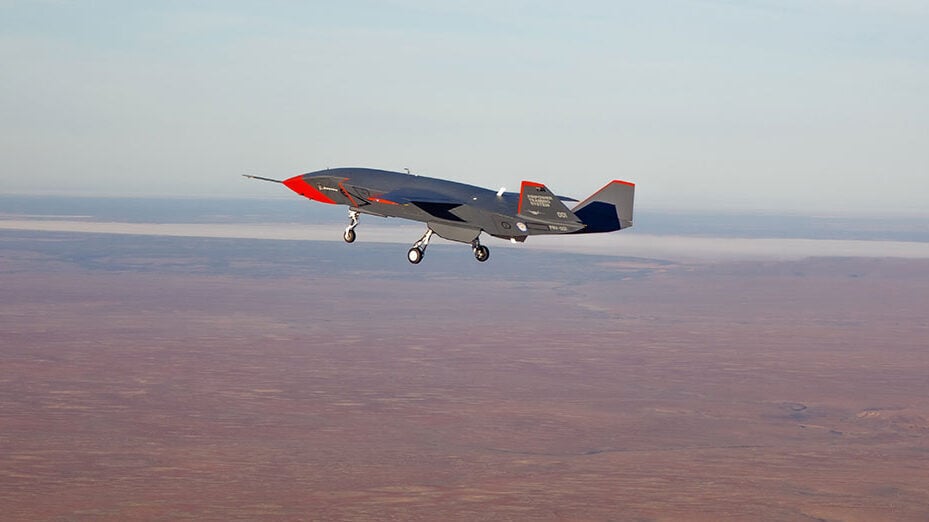
Navy says future drone wingmen need to come in under $15 million price point - Breaking Defense
“I want something that's going to fly for a couple hundred hours. The last hour it's either a target or a weapon. ... But I'm not going to sustain them for 30 years,” said Rear Adm. Stephen Tedford, the Navy’s program executive for unmanned systems and weapons.
jsport
what do you know about surfing Major? you're from-
- Joined
- 27 July 2011
- Messages
- 6,719
- Reaction score
- 4,181
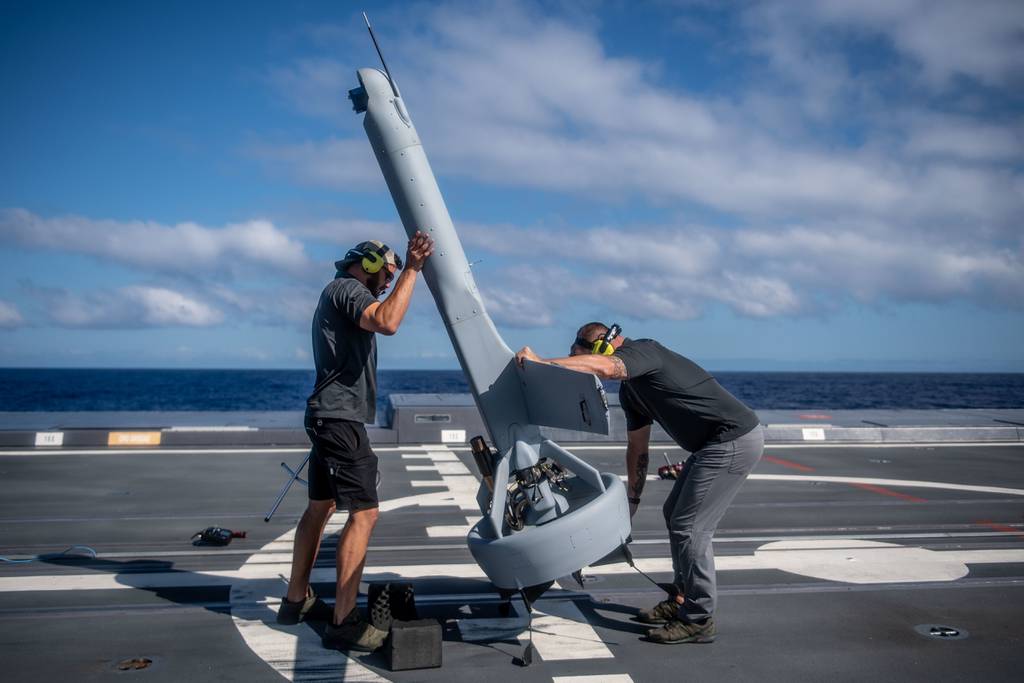
Shield AI to let Hivemind software fly three more aircraft
The company has already folded the autonomous flight software into three classes of quadcopters, the V-Bat drone, the F-16 jet and the MQM-178 drone.
Similar threads
-
-
CNO Greenert Warns Congress of Fighter Shortfall, Hornet Line to Close 2017
- Started by Triton
- Replies: 1
-
Boeing Begins Production of F/A-18E/F Distributed Targeting System
- Started by seruriermarshal
- Replies: 0
-
Lockheed Martin F-35 Lightning II Joint Strike Fighter (JSF)
- Started by Triton
- Replies: 5K
-
